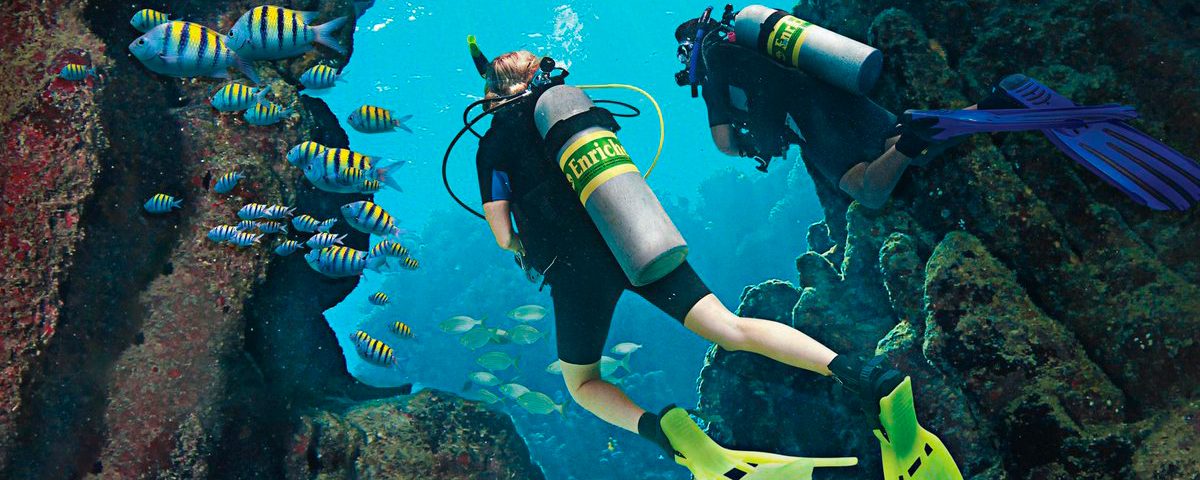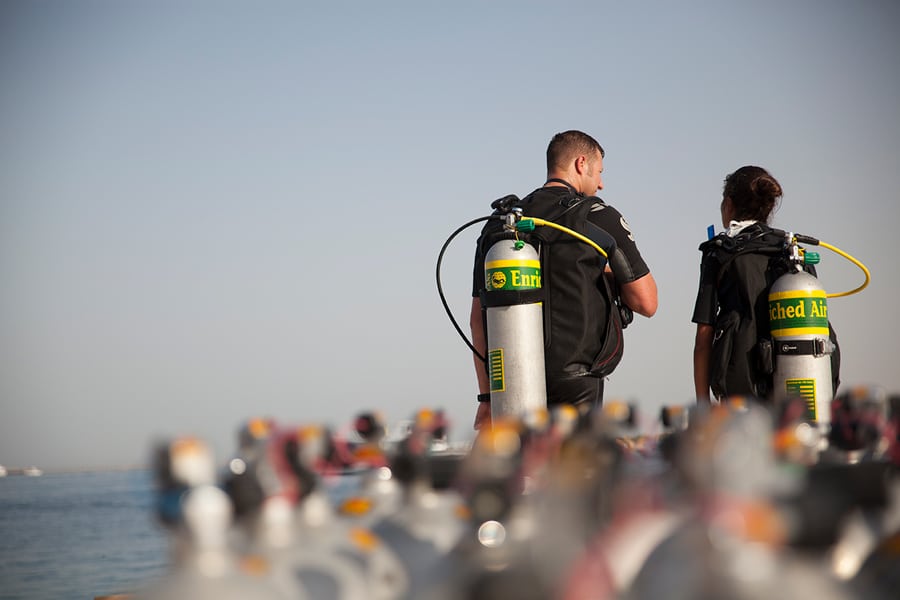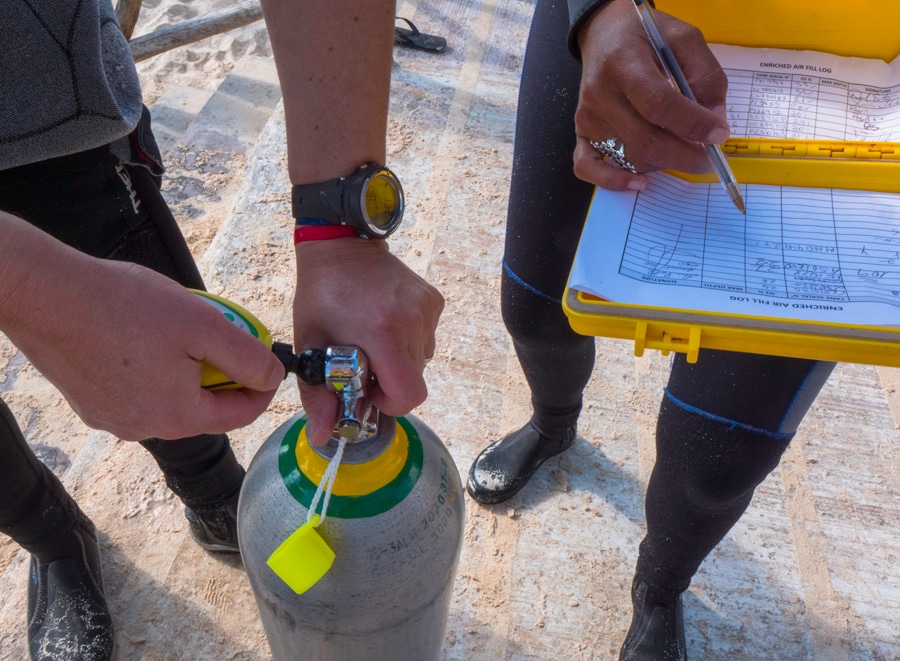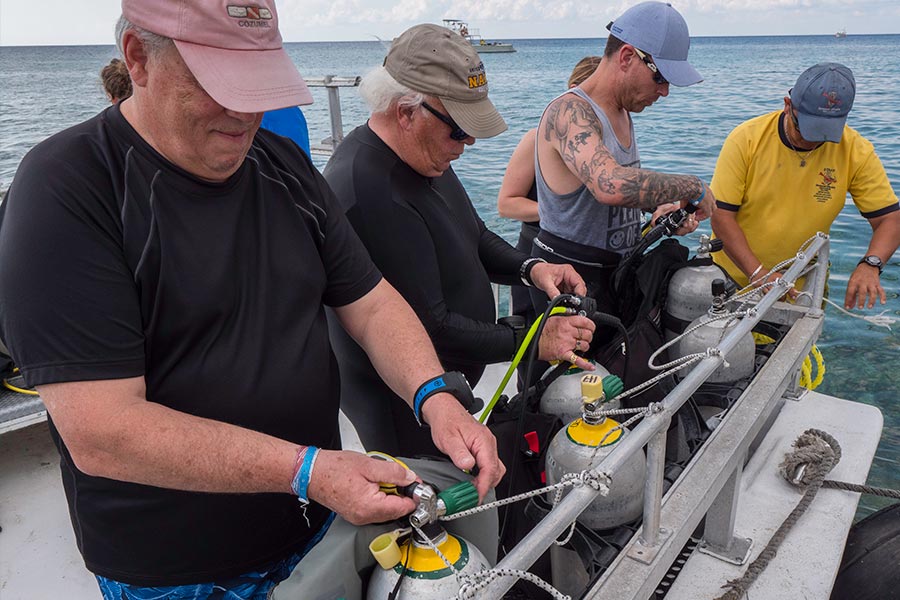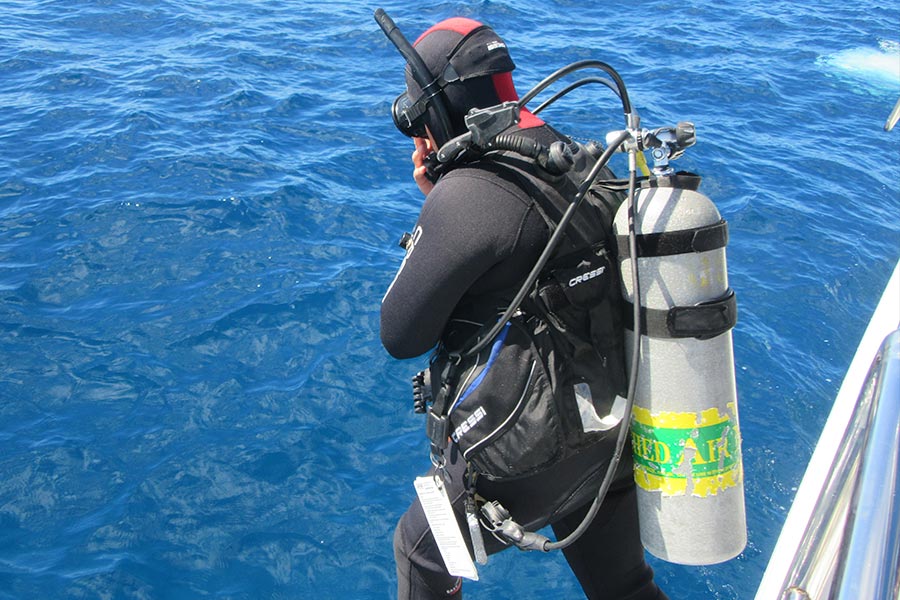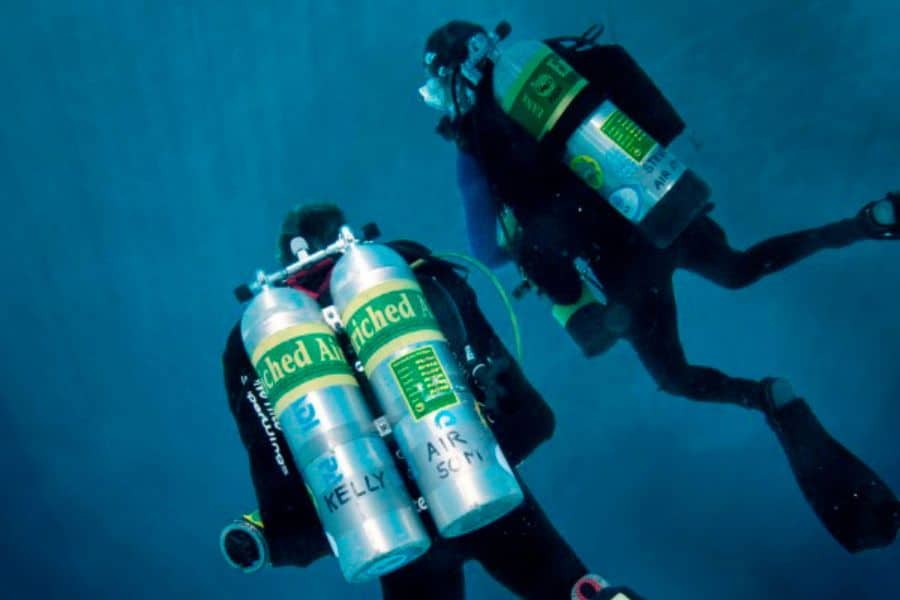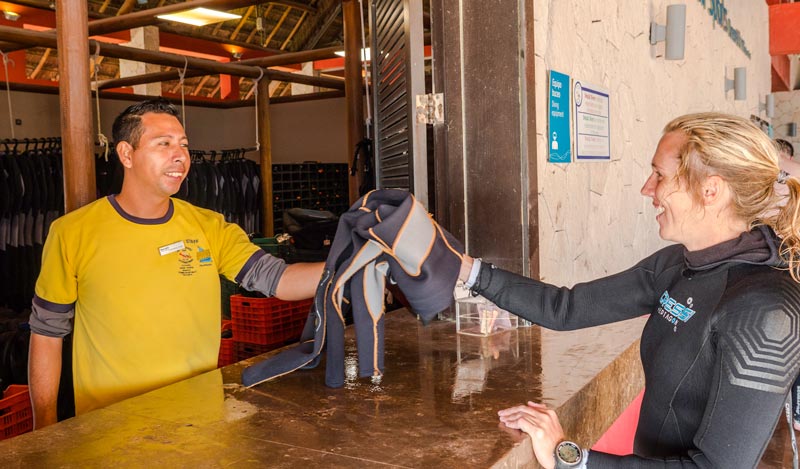1. What is Enriched Air Diving?
Ready to explore the depths? Let’s dive right into it (pun intended). An enriched air diver doesn’t use the ordinary blend of gases that we find in our regular air tanks.
The air we usually breathe is about 21% oxygen and 79% nitrogen. Well, in these enriched air cylinders, the oxygen percentage increases.
Things are about to get a bit technical but worth it. Drumroll, please!
The show’s star is EANx, aka Enriched Air Nitrox, and it comes in different mixes.
The top three are:
EAN32 or Nitrox I:
It is about 32% oxygen and 68% nitrogen. Suitable for recreational enriched air diving and permissible for dives at any depth within the recommended limits for recreational diving. Enriches air divers can experience this mix at most Dressel Divers centers without spending an extra dime.
EAN36 or Nitrox II:
To extend dives at intermediate depths this mix contains 36% oxygen and 64% nitrogen.
EAN40:
This one’s a bit daring with 40% oxygen and 60% nitrogen. This mixture is not used in recreational diving; technical divers use it.
When choosing an appropriate air mixture for enriched air diving, we need to take into account the depth and duration of our planned underwater stay. Consequently, rather than pondering the best or worst mixture, it is essential to concentrate on selecting the suitable one for that particular dive.
1.1. Why Do Divers Use Enriched Air?
Why should you consider getting certified in enriched air diving? It’s a game-changer for divers looking to enjoy longer dives with added safety. With the right blend of gases, you can extend your bottom time and reduce decompression illness.
As we’re aware, the nitrogen we breathe from diving tanks is subjected to varying partial pressures depending on the depth. The greater the partial pressure, the more nitrogen our bodies absorb. This phenomenon becomes more pronounced as dive durations extend.
In recreational scuba diving, adhering to ascent limits that avoid decompression becomes paramount, even when engaging in enriched air diving. The additional nitrogen our bodies assimilate is efficiently purged as we ascend, obviating the need for extended stops.
The differentiating factor between Nitrox-assisted diving and conventional methods lies in the permissible duration spent beneath the water’s surface without encroaching upon decompression limits. By opting for Nitrox-enriched air, which contains a reduced nitrogen content, our bodies uptake less of this element. Consequently, we gain the ability to prolong our time underwater during relatively shallow dives.




